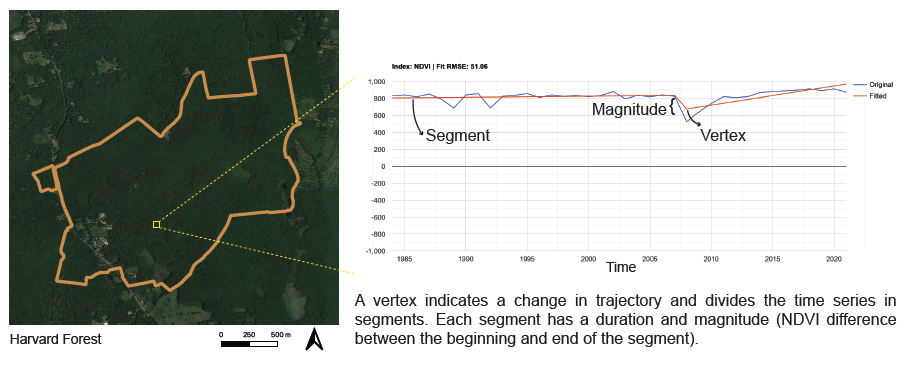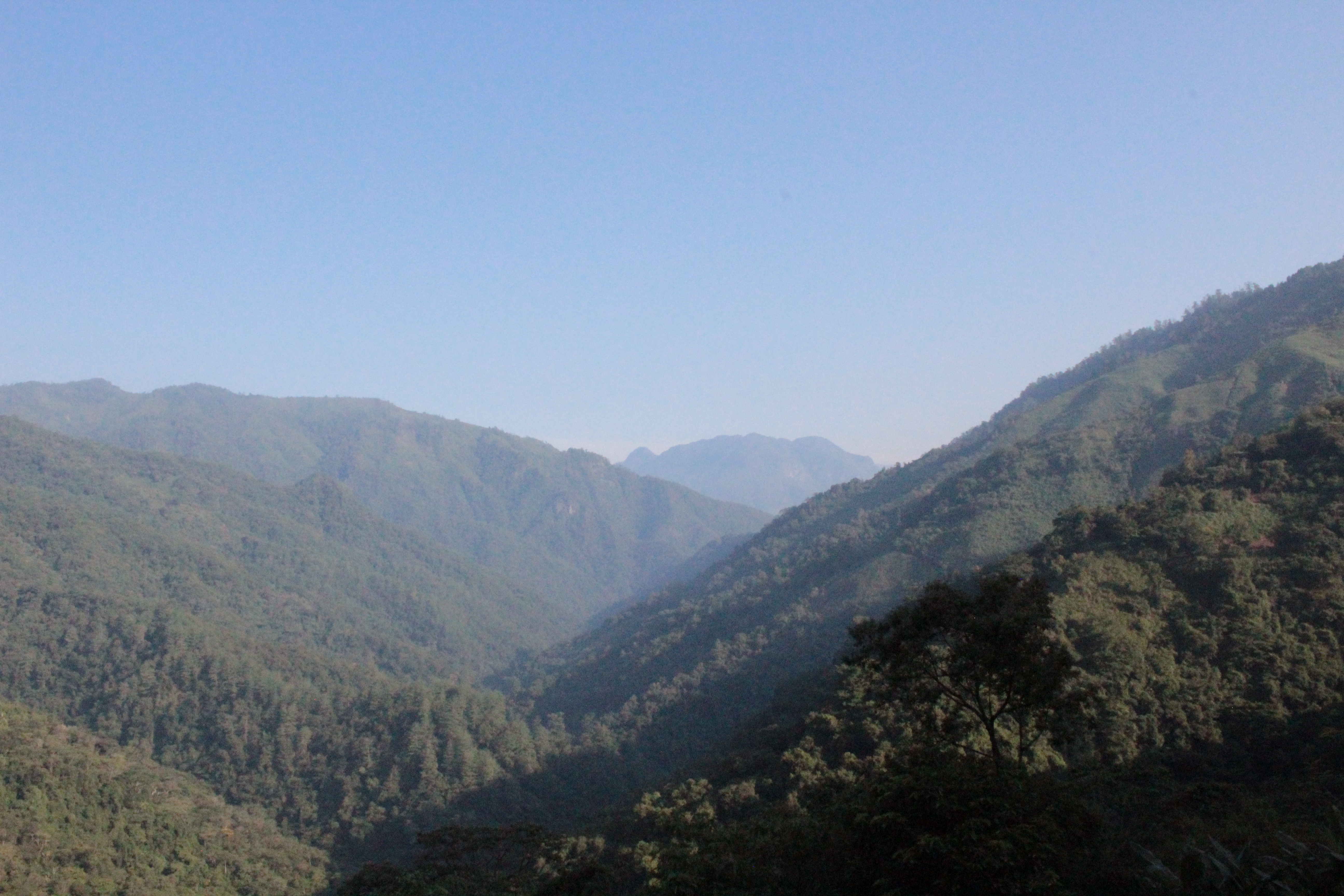Research Projects
Disturbance syndromes
Can disturbance syndromes help better predict forest structure and function?
In this project we are characterizing and classifying forest disturbance history using Landsat time series and non-hierarchical classification methods. For doing so, we are analyzing spectral trajectories of forests with LandTrendr in Google Earth Engine and classifying the disturbance trajectories into disturbance syndromes. The main objective of this project is to better understand the role of recent disturbance in shaping current forest structure and function. See our preliminary results in this poster focused on the NEON site Harvard Forest that I presented at the Anthromes, CO2 , and Terrestrial Carbon meeting.

Forest loss and conservation in tropical mountains
How are tropical montane forests changing due to current trends of land-use/land-cover change?
This research project seeks to understand current processes of forest loss in tropical mountains and their relation to different forest conservation strategies from a coupled natural-human systems approach. I focused on the Northern Mountains of Oaxaca, a mountain range that is famous for the community-based forest conservation projects that take place there, but where forest cover loss has increased in the last years. You can see some preliminary results in this map.
Forest structure along environmental and land-use intensity gradients
What are the relative roles of environmental and land-use variables in shaping forest structure?
This project focuses on understanding the spatial distribution of forest structural attributes and aboveground biomass along an elevation gradient and a land-use intensity gradient in tropical mountains. I addressed this question studying forest-agriculture mosaics in the Northern Mountains of Oaxaca, in Mexico, where I took the photo I’m showing below. A paper showing the results of this research is about to be published in the journal Ecosystems.


